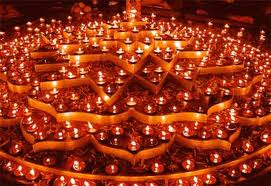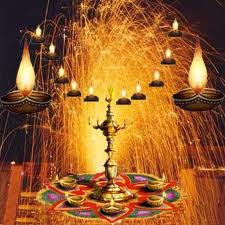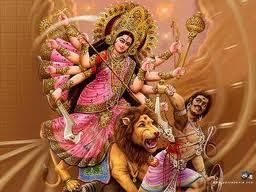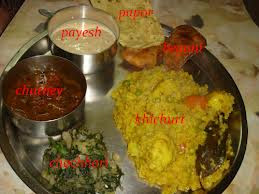- Golden Temple: Golden temple, which is popularly known as
Harmindar Sahib or Sri Durbar Sahib is the popular holy shrine of Sikhs,
located in Amritsar, Punjab,India. The temple is named after the god Hari. It is the revered
and cultural center of Sikhs. This vital Sikh shrine magnetizes more tourists
than the Taj Mahal with more than
100,000 tourists per a day. A holy bath at Amritsar Golden temple is
believed to purify the soul of the devotees.

- Badrinath Temple: Badrinath Temple is also known as Badrinarayan
temple, situated along the Alaknanda River, in the hill town of Badrinath,
Uttarakhand
in India. The temple is devoted to Lord Vishnu and is extensively
considered to be one of the holiest Hindu temples in India. The temple and
town are also regarded as one of the four Char Dham and Chota Char Dham
pilgrimage sites. It is one of the five associated shrines called as Panch
Badri and also one of the 108 Divya Desams, holy shrines for
Vaishnavites.

- Kedarnath Temple: Kedarnath
temple is one of the holiest Hindu temples devoted
to Lord Shiva and also one of the 12 Jyotirlingas in India. It is located
near the Mandakini River at the Garhwal Himalayan range near in Kedarnath,
Uttarakhand in India. The temple is open only between the ends of April to
Kartik Purnima due to the extreme
weather conditions of the place.

- Tirupathi/Tirumala: The revered and one of the prehistoric temples
of Sri
Venkateshwara is nestled in the verdant Eastern Ghats - a mountain
range that runs along south-eastern India. These hills are called as Tirumala
Hills and are 3200 feet above the sea level. Lord Venkateswara at Tirumala
is considered as the world’s richest temple in with an estimated annual
income of over 300 crores.

- Srisailam: Srisailam
is a popular pilgrimage centre known for the abode of Lord Shiva and goddess
Parvathi in the form of Lord Mallikarjuna and Goddess Brahmarambika. The
temple of Sri Mallikarjuna and Brahmarambika in Srisailam is considered revered
and must-visit after the temple of Lord Venkateshwara in Tirupati. Over
years the popularity of this place has increased so much that Srisailam
has gained recognition all over India.

- Murudeshwara Temple: The Murudeshwar temple situated atop a small hill called Kanduka Giri is a major tourist attraction. A huge towering idol of Lord Shiva, visible from great distances in Murudeshwar is a sight worth remembering forever. The statue is 123 feet (37 m) in height, which took about 2 years to build. The idol is designed such that the sun s rays fall
directly on its face. - Mecca Masjid: Mecca
Masjid is a magnificent building with a main hall that is 75 feet
high, 220 feet wide and 180 feet long. It can accommodate about ten
thousand worshippers at a single go. Fifteen graceful arches support the
roof of the main hall, five on each of the three sides.

- Kali Temple - Kali ghat: Kali
temple is devoted to Hindu Goddess Kalika and is one of the most revered
pilgrimage destinations of India. The Kali Temple (originally a small
hut), was built in 1809 by Raja Basanta Roy of the Sabarna Roy Chowdhury
clan - who offered 595 bighas of land to the Temple deity.

- Sree Padmanabha Swamy Temple: Sree Padmanabha Swamy Temple
at Syanandoora or today’s Thiruvananthapuram
has shed its radiance in continuous flow down the annals of oral tradition
and written history. Its evolution reflects the social, historic and sacred
growth of the region over which its influence was felt, which often
extended to territories lying well inside present Southern Tamil Nadu.
Ranking among the best known temples in Kerala, this shrine retains its
position as the most important in Travancore standing in majestic splendor
in the heart of Thiruvananthapuram, capital of Kerala.

- Sri Krishna Janmabhoomi Temple: Sri
Krishna Janmabhoomi Temple is also known as Keshava Deo or Keshava
Dev Temple. It is the most sought after religious centers in Mathura
city. Its prevalence compared to other holy spots is because of the belief
that the temple stands on the birthplace of Lord Krishna. Krishna was born
to Vasudeva and Devaki in the prison.

- Meenakshi Amman Temple: Meenakshi
Amman Temple is one of the most popular Hindu Pilgrimage places,
located in the heart of Madurai, Tamil Nadu. This temple is dedicated to
Lord Shiva, who is also known as Sundareswarar (Beautiful God) along with
his wife Parvati who is also known as Meenakshi. The Temple was first
built 2000 years ago and then expanded substantially during the reign of
Thirumalai Nayak in the years 1623- 1655 A.D.
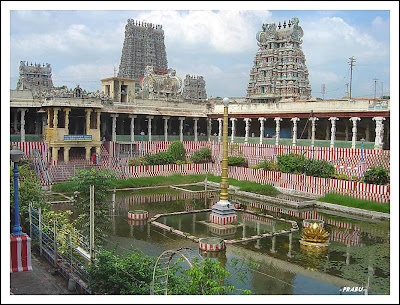
- Medak Church: Made of solid white granite Medak
Church stands at 173 feet tall. The church, the single largest
diocese in Asia and the second largest in the world after the Vatican is
built in solid white granite. Medak Church was constructed between 1914
and 1924 and Thomas Edward Harding who is an architect put in all his best
efforts building the cathedral.

- Shirdi Sai baba Temple - Samadhi
Mandir of Shri Sai Baba: The Samadhi Mandir of Shri Sai Baba was constructed
by a famous Sai devotee Shreemant Gopalrao. It is believed that he wanted
to enshrine an idol of Murlidhar there but Sai Baba manifested himself as
Murlidhar and the temple became the Samadhi Mandir of Baba.

- Vaishno Devi Temple: Mata
Vaishno devi Temple – a cave shrine dedicated to the Hindu
Mythological Goddess ‘Shakti’ – the All-Supreme Goddess of creative power.
Most Hindu traditions believe that the Vaishno Devi Temple is the holiest
of all the ‘Shakti peetas’ – places of devotion dedicated to Goddess
Shakti. Vaishno Devi Temple is also the second most visited temple in
India after the Tirumala
Venkateshwara Temple in Andhra Pradesh.
- Amarnath Yatra: The toughest Yatra of them all – the Amarnath
Yatra – the Hindu Annual Pilgrimage of Lord ‘Shiva Linga’ is here,
beckoning all the strong-willed on a spiritual journey all the way up to13,000
feet altitude to the 130-foot high Amarnath Cave where the ice Shiva Linga
naturally forms every year. Amarnath Yatra is open for 37 days this year
between 25 June and 2 August. Registrations – online and over the counter
are open. On-spot registrations are also possible.

Pics Source: dkmishra,Prabhu,Shri saibabasantham,google
More info @ http://hoparoundindia.com/
--> Book air tickets @ CheapOair.ca
Favorites in India
Favorites in india is a gallery of Blogs,Articles and stories of Indian cultural activites such as temples, tourist places, about nature, and Festivals.
Thursday, 15 November 2012
Top 15 Religious Places In India
Sunday, 11 November 2012
Lakshmi Puja on Diwali
The third day of Diwali festival is the most important one for Lakshmi-puja and is entirely devoted to the propitiation of Goddess Lakshmi. On this very day sun enters his second course and passes Libra which is represented by the balance or scale. Hence, this design of Libra is believed to have suggested the balancing of account books and their closing. Despite the fact that this day falls on an amavasya day it is regarded as the most auspicious.
The day of Lakshmi-Puja falls on the dark night of Amavasya. The strains of joyous sounds of bells and drums float from the temples as man is invoking Goddess Laxmi in a wondrous holy "pouring-in" of his heart. All of a sudden that impenetrable darkness is pierced by innumerable rays of light for just a moment and the next moment a blaze of light descends down to earth from heaven as golden-footed Deep-Lakshmi alights on earth in all her celestial glory amidst chantings of Vedic hymns.
A sublime light of knowledge dawns upon humanity and this self enlightenment is expressed through the twinkling lamps that illuminate the palaces of thewealthy as well as the lowly abodes of the poor. It is believed that on this day Lakshmi walks through the green fields and loiters through the bye-lanes and showers her blessings on man for plenty and prosperity.
Lakshmi Pooja, or the worship of the goddess of wealth, is the main event on Diwali in North and West India. It is extremely important to keep the house spotlessly clean and pure on Diwali. Goddess Lakshmi likes cleanliness, and she will visit the cleanest house first. This is also the reason why the broom is worshiped on this day with offerings of haldi and kumkum (turmeric and vermilion). Lamps are lit in the evening to welcome the goddess. They are believed to light up Her path.
Lakshmi Puja consists of a combined puja of five deities: Ganesha is worshiped at the beginning of every auspicious act as Vighnaharta; Goddess Lakshmi is worshiped in her three forms - Mahalakshmi (the goddess of wealth and money), Mahasaraswati (the goddess of books and learning), and Mahakali; Kuber (the treasurer of the gods) is also worshiped.
For more:
http://hinduadhyathmikam.blogspot.com
For more:
http://hinduadhyathmikam.blogspot.com
Friday, 9 November 2012
Diwali celebrations in India
"Diwali"
is another name of "Deepavali", which is known as "Row ofLights". This festival is also called the "Festival of Lights".
Diwali is the name for the festival in North-India. In South-India the festival
is called "Deepavali". It celebrates to success of the Good over the good
and Light over Darkness. It is a
significant festival for Hindus,
Sikhs and Jains alike in India. The day of Diwali falls on Ashvina Amavasya on 15 Ashvin (Hindu month), the festival of lights which is celebrated by
Indians with great Zeal and enthusiasm. In 2012 it will be celebrated on 13th
November.
This
is 5 days festival. On the first day people worshipped to Goddess Laxmi for success
and wealth. The second day (Choti Diwali) is also known as 'Small Diwali',
'Naraka Chaturdashi' or 'Kali Chaudas' in some states. As per the legend, Lord Kirshna killed the evil
daemon Narakasura on this day. People worship Goddess Lakshmi and Lord Rama.
The third day is the real day of Diwali. Many devotees visit their Temples for praying
Lakshmi, Goddess of beauty, prosperity
and wealth with Laxmi Poojas and also pray to Ganesh, the 'Lord of Beginnings'
and 'Remover of Obstacles'. When Aarti is performed, oil lamps with a cotton
wick are placed on a Puja Thali and offered to the deities, praising the deity
by singing wonderful Aarti songs.
At
night people light up little oil lamps called Diyas, Dipa Lights and place them
around their houses. They hang colorful lanterns and fairy lights, enjoying
firework displays or blasting fire crackers. On forth day (Padwa) is 1st
of Kartika masam in the Hindu calendar .
Finally the 5th and last day
of Diwali is called 'Bhaiduj' ('Bhai Dooj') also known as 'Yama Dwitiya'. This
is the day for brothers and sisters to support their relationships. Just like
Yami prayed for her brother Yama (God of Death), sisters are praying for their
brother's well-being on this day, and brothers give little gifts to their
sisters in return. On this day people prepare different types of recipes and
sweets and they distributed to everyone.
Tuesday, 23 October 2012
Maha Navami
Mahanavami is the 9nth
day of Durga Navaratri Festival. Maha Navami starts with Mahasnan and
Shodashopachar Puja. Maha Navami celebrated in the month of Ashwiyuja sukla paksha Navami. This is the
most important Hindu festival in India. Maha Navami is celebrated on Tuesday,
23rd October, 2012.
In some places in India, worshipping of girls is done called Kanya Puja. On Maha Navami Goddess Durga is worshipped as Aparajita Devi which means the one that can never by defeated. Also Sugar cane stalks are offered to Goddess Aparajita Devi on Maha Navami.
It is believed that Goddess Durga is adored as
Mahishasura Mardini on Maha Navami. It is called as Maha Navami, On this day
Mahishasura was killed by Goddess Durga and got the name Mahishasura Mardini.
On this day Navami Homa is performed by the people and it is the
important ritual during Durga Puja. The
best time to perform Homa is at the end of Navami Puja.
The rituals associated with Navratri Maha Navami
different from region to region. In South
India, Maha Navami is celebrated as Ayudha Puja. All books, utensils and tools
are kept for puja.
Maha Navami rituals are the final rituals
associated with Durga Puja. The next day is Durga Murti immersed in to river. A
major bhog is held on the day and Prasad is offered to Goddess Durga. Food
items prepared on the day is shared by devotees.
In some places, animal sacrifice is held on the
day. But it is still held in rural regions and famous Durga Mata and Kali MataTemple.
In some places in India, worshipping of girls is done called Kanya Puja. On Maha Navami Goddess Durga is worshipped as Aparajita Devi which means the one that can never by defeated. Also Sugar cane stalks are offered to Goddess Aparajita Devi on Maha Navami.
Subscribe to:
Comments (Atom)



